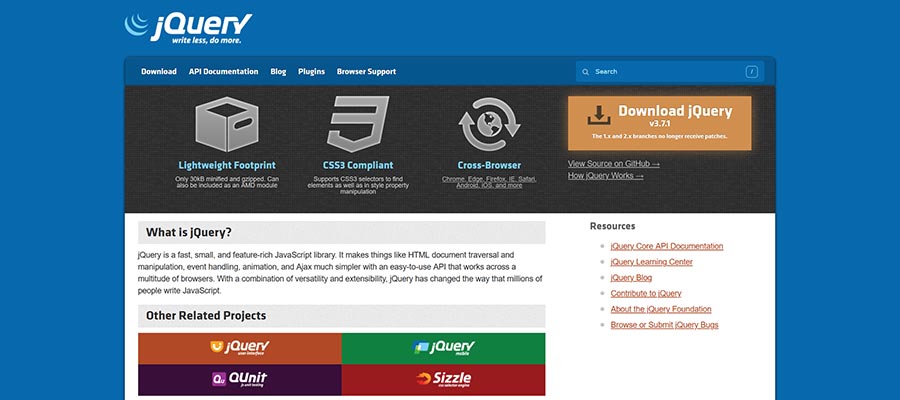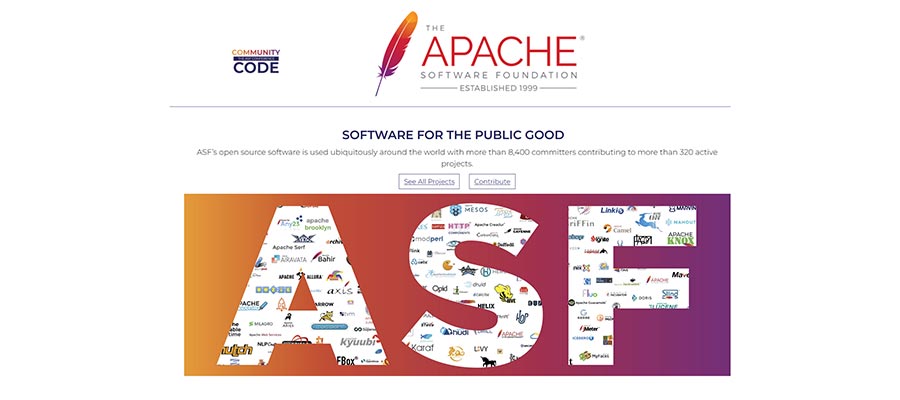We may think of web design as a high-tech industry. And it does see its share of new tools and techniques. But its old-school roots are still quite apparent.
If you look closely, you’ll find decades-old technology. And it’s not limited to outdated websites. The fingerprints of the past are all over cutting-edge sites as well.
Sure, many of these technologies have evolved. Others have faded into the background. But we still rely on them. Perhaps more than we think.
With that, here’s a look at the old-school tech that continues to shape the web development industry.
Apache is no longer the top dog in web servers. However, the platform still holds a significant market share. W3Techs reports that it runs on over 30% of servers. That’s a close second to competitor Nginx.
Equally impressive is Apache’s longevity. Its initial release came way back in 1995.
The web was a much different place in those days. Most websites of that era consisted of static HTML. Let’s not forget about the low-powered hardware and limited bandwidth as well.
Apache has managed to keep up with the times. It’s a highly scalable platform that can handle large amounts of traffic. It also supports next-gen tech like HTTP/2 and IPv6.
Plus, Apache is responsible for many familiar technologies of its own. Development staples like .htaccess, gzip compression, and URL rewriting are supported.
jQuery
People continue to write off jQuery. But it’s hard to find evidence of a slowdown. The JavaScript library is used on over 77% of all websites.
Compare that number with its supposed heyday of 2012. Its usage was a mere 49% back then.
Being bundled with WordPress is one factor in jQuery’s growth. The world’s most widely used content management system (CMS) boosts those numbers. But that’s not the only reason.
Many of us are familiar with jQuery. And we know how to use it. That level of comfort continues to make it a go-to library.
Plus, it’s still in active development. jQuery continues to be refined and optimized for performance.
Yes, there are other worthy frameworks. And vanilla JavaScript has come a long way. But we bury jQuery at our own risk.

JPEG Images
We’ve been attempting to replace JPEG images for some time. Newer formats like SVG, WebP, and AVIF promise lossless compression. But this old-school file type from 1992 still bests them.
Both SVG and WebP are gaining ground. Yet JPEG carries on with a nearly 78% usage rate. Why is that?
For one, JPEG has the advantage of being a long-established format. Just about every image editing app supports it. And many of us have become used to saving images this way.
It’s also universally compatible with web browsers. WebP, for instance, doesn’t work with some legacy apps. That’s becoming less of a concern, however. Many of these browsers are vanishing from the landscape.
But after all these years, JPEG still works well for photographs. And its file size outperforms WebP in certain situations. It may not be the best option in every instance. But the format is still a viable choice.

The Command Line
The command line harkens back to a time before the graphical user interface (GUI). You may remember typing commands into MS-DOS if you’re of a certain age. And early systems like Unix were also command-based.
It almost seems ironic that the command line interface (CLI) is still a part of web development. The lineage is there, though. Linux powers many web servers, after all. But it’s also the “Throwback Thursday” of the industry.
Web hosting companies have attempted to replace or supplement the CLI. Visual control panels can replicate some functionality.
But the CLI also brings speed and efficiency to the party. Tools like WordPress have their own CLI flavors. And they can accomplish tasks without the overhead of a GUI.
It also offers fine-grain control over commands. You can target specific database tables or folders with relative ease.
The CLI survives because it’s still incredibly useful. And it beats using punch cards any day.

HTML
Maybe it’s a bit obvious. But no talk of old-school web technologies is complete without HTML. It’s still the basis of what we do.
Conceptualized in 1989, HTML saw its first release in 1991. It has since seen numerous iterations. And it is still evolving to meet the needs of the modern web.
HTML is capable of powering a website by itself. But it no longer stands alone. We can combine it with other languages to get the desired result. That could be CSS, PHP, Java, JavaScript, Ruby, or anything else that comes along.
These additional tools allow us to style and manipulate elements. We can tie in with a database to conditionally produce output. That has paved the way for the complex web applications we see today.
At 30+ years old, HTML is still as relevant as ever. And perhaps more flexible to boot.
Older Tech Continues to Find New Purpose
Longevity isn’t very common on the web. Or not on the front end, at least. Design trends come and go quickly. As do the tools and services we rely on.
But beneath all of that lies a bedrock of foundational technologies. Each of the items above qualifies. They’ve been a part of our job for decades.
And they’re far from the only ones. We didn’t delve into CSS or FTP, for instance. But they, along with dozens of other tools, are vital pieces of the jigsaw for developers.
Their continued presence brings comfort. That’s a good thing in an industry that changes so quickly.






